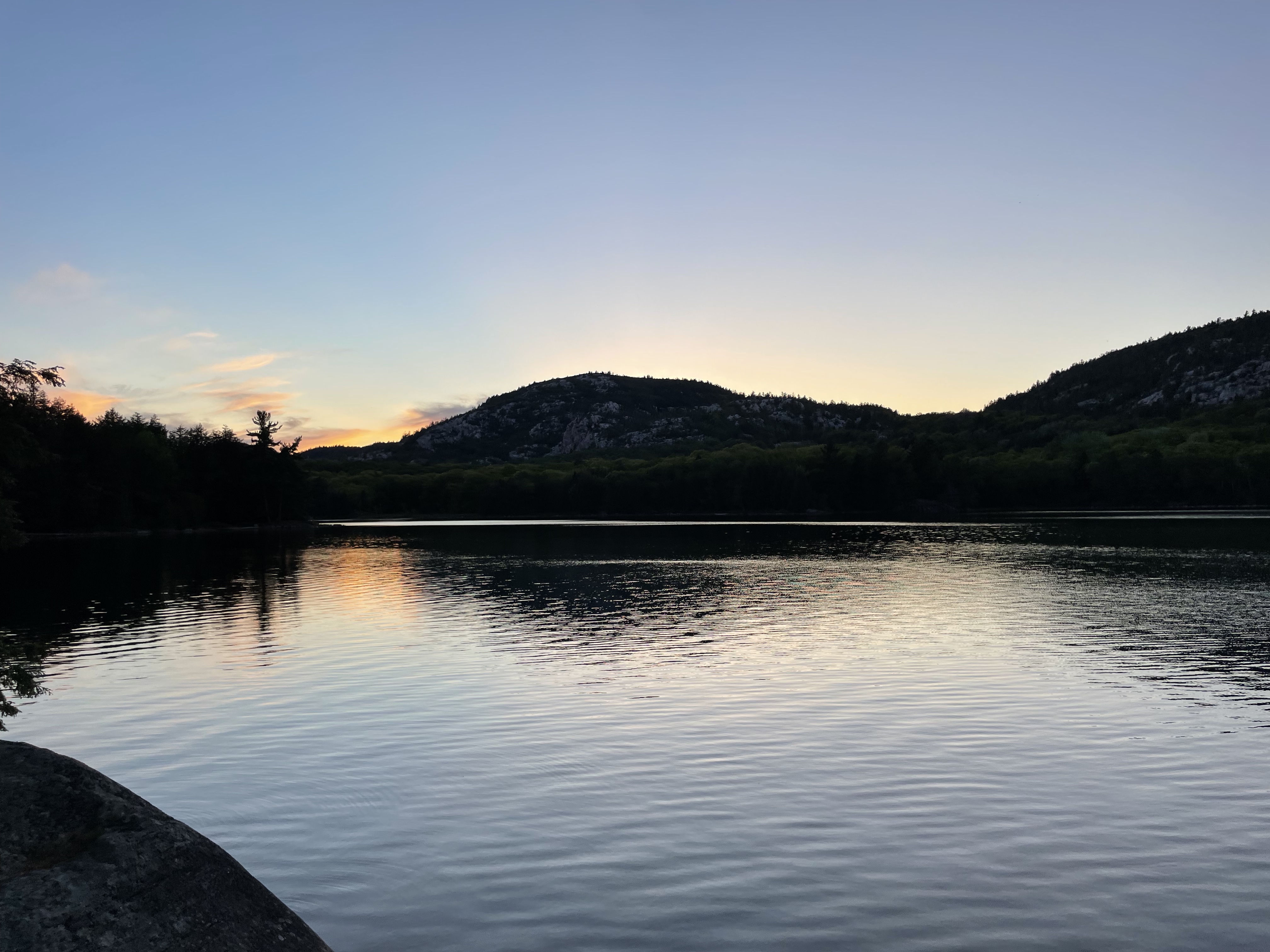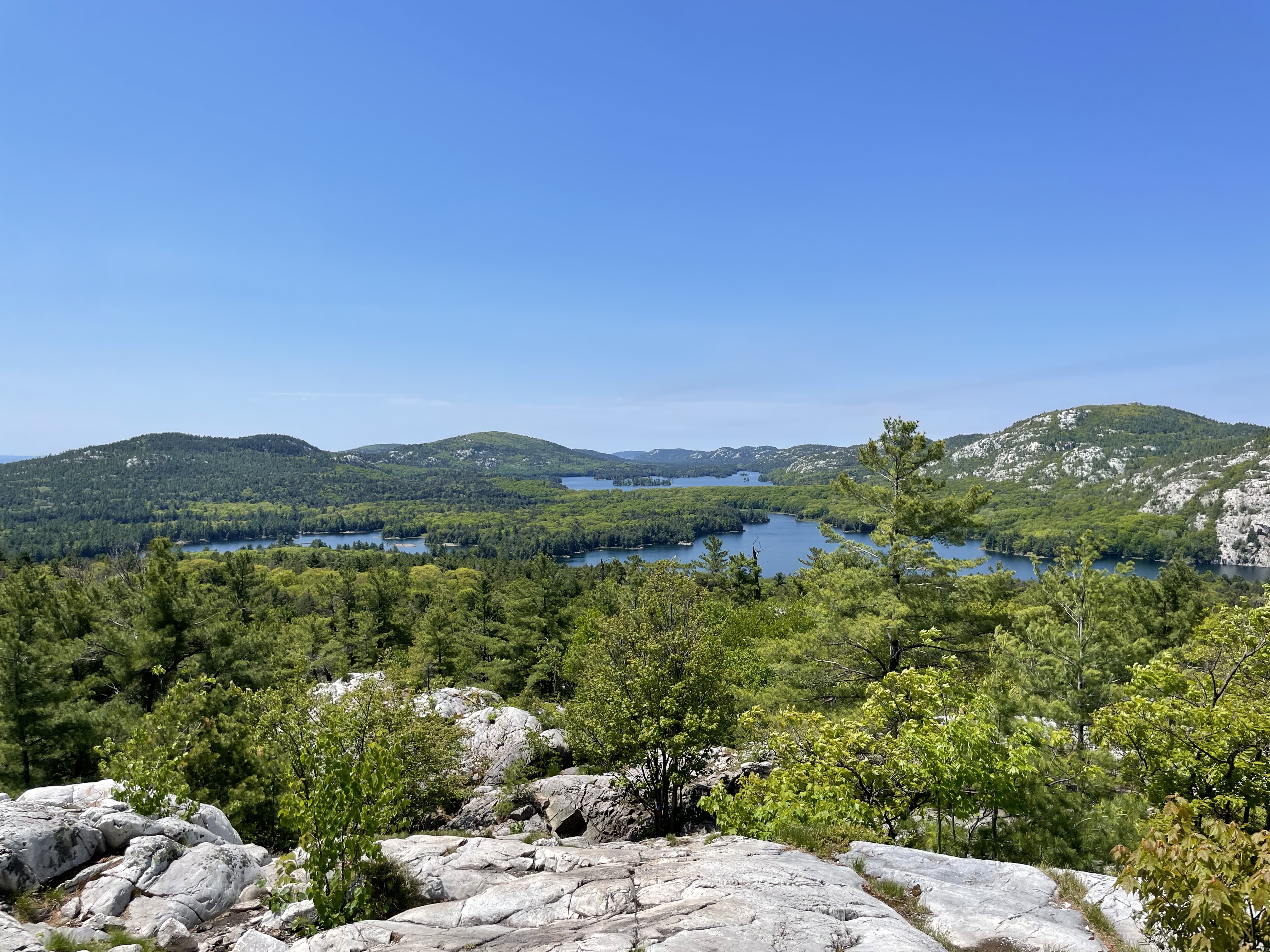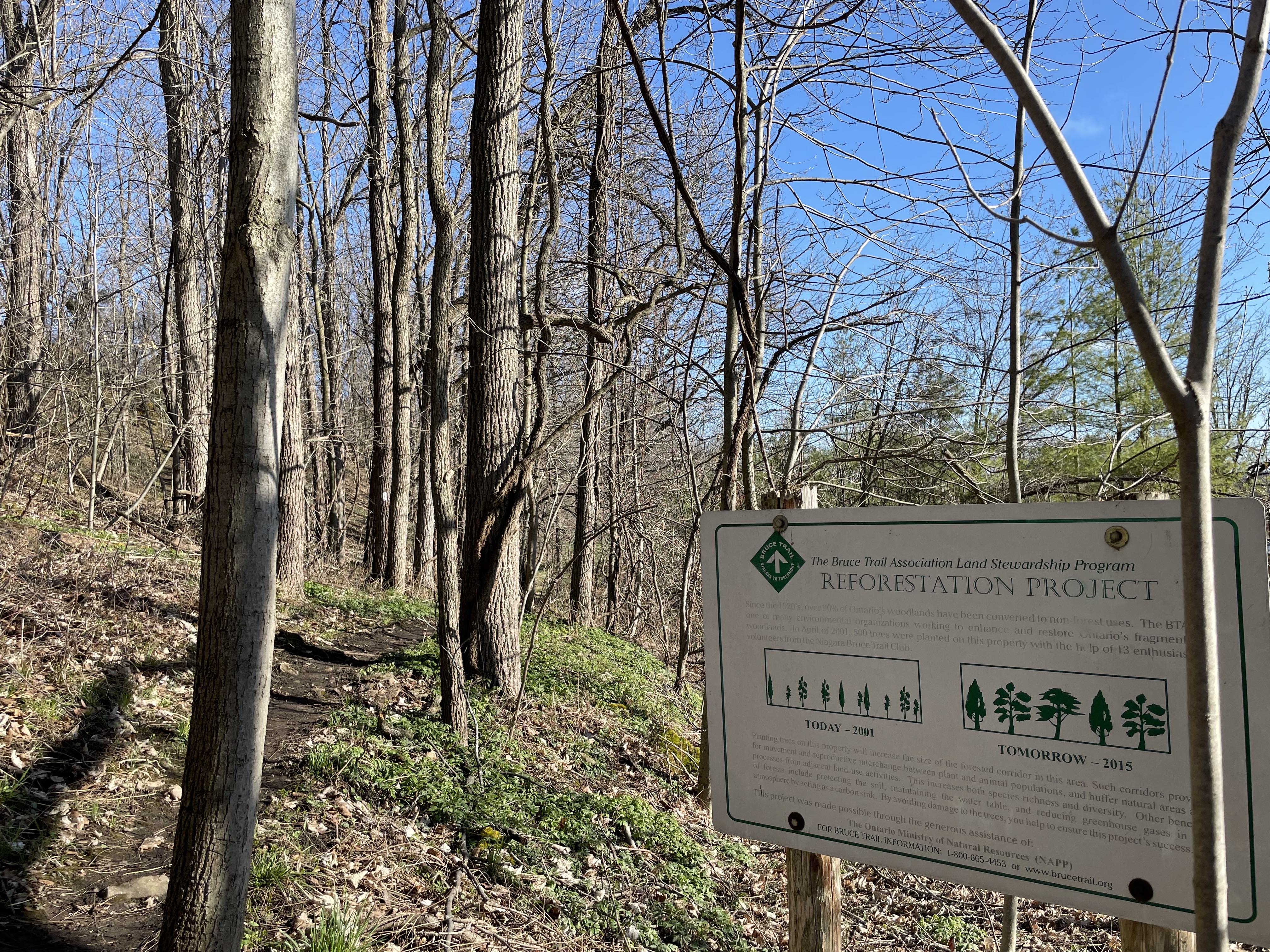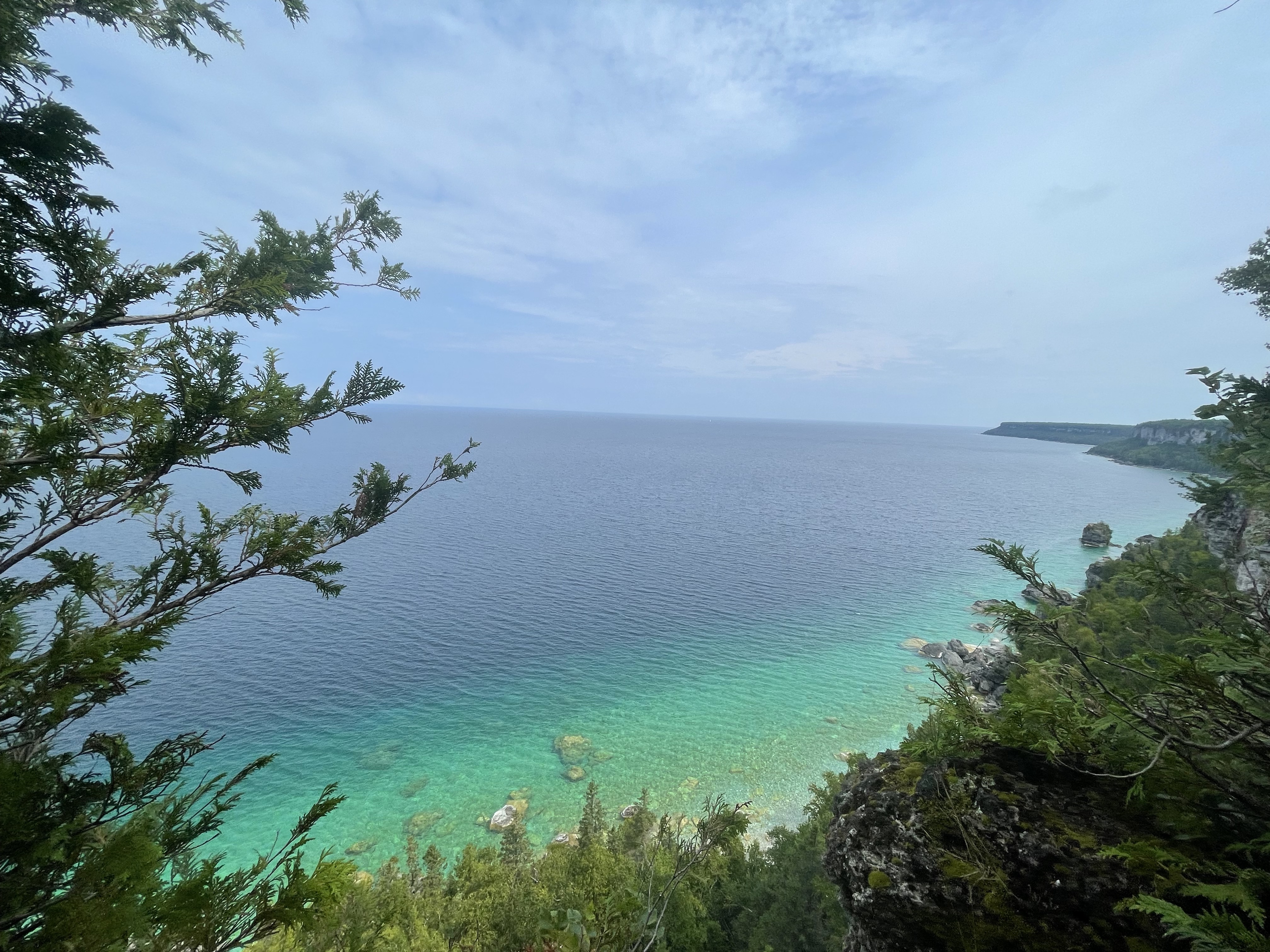Training for a Thru Hike
 Sunset over Killarney Park in my 2022 Spring gear tests
Sunset over Killarney Park in my 2022 Spring gear tests
After years of preparation, I'm finally hiking the Appalachian Trail this March. I've been doing quite a bit of training over the last year to help my thru hike. Here's a rundown of my routine so far, across gear tests and personal training.
2022 - 2023: Gear tests and backcountry overnighters
Throughout 2022 and 2023 I've been constantly testing my gear through backcountry adventures. In early spring of 2022 I set off for a week long portage trip in Killarney. Summer had three more adventures, from week long adventures to overnight sojourns, all featured in Algonquin Park and the Bruce Trail. And this winter has had two more overnight hikes in Algonquin.
 Killarney Park was gorgeous
Killarney Park was gorgeous
These adventures were not only a ton of fun, but have also given me opportunities to test my gear in literally every season and against everything mother nature has thrown at it so far. My tent has stayed pitched and kept me dry through rolling summer thunderstorms and windswept winter blizzards. My sleeping pad has kept me warm down to an astonishing -9C (although after that, I always bring another pad below 0C). My cook kit is just big enough to make a full size ramen or Knorr Sidekick. In a pinch I can use my sitpad as a pillow, if I wrap it up and try not to think about all the farts it's experienced. All useful information gleamed from in-field testing.
 Training for a Thru Hike is no joke!
Training for a Thru Hike is no joke!
2022 Spring - Fall: Bruce Trail Weekend Hikes
My conditioning started last year in the spring with long weekend hikes on the Bruce Trail to begin working my legs. I would drive to the trailhead, hike for 8 hrs (20 - 30 KM depending on the terrain and how I felt), then grab an Uber back to my car. The next weekend I would drive to the end of the last hike, and start all over again. I did this almost every weekend, except when I was otherwise portaging in Killarney or Algonquin, or sick. It was great for conditioning my legs and ankles.
 Bruce Trail in the early Spring...
Bruce Trail in the early Spring...
It was also beautiful hiking through the seasons, watching the tree branches turn from barren dead to bright green and verdant with life. Witnessing the birds, foxes, and other wildlife return with the heat and sustenance of the warmer months was sublime as well.
 ...And the Bruce Trail again in late Summer
...And the Bruce Trail again in late Summer
2023 January - March: Rucking, PPL, Yoga, Oh My
This when I started ramping up my training. I posted on r/bodyweightfitness asking about my routine. They recommended more leg workouts and to climb stairs. Makes sense. My plan consists of 6 days of training covering:
- Push - Pull - Legs
- HIIT cardio on Wednesdays
- Steady state rucking cardio weekdays
- Long steady state cardio on weekends
- Yoga on Fridays for flexibility
A staple of it is walking with a 45LB weighted backpack for an hour every day, or 'rucking'. I didn't buy any special gear for this; I simply took a hiking backpack and put in several 2L pop bottles filled with water. I should note that because I fill the bottles to the top, there's no "sloshing affect" as my doubting best friend refused to believe until he tried out the bag himself. I used my luggage scale to determine the weight. This is about 10LB heavier than my estimated 35LB max weight packed up for a 5 day resupply on trail. With this kind of weight on my back, it's like portaging a canoe for an hour a day. It gets my heart rate up to zone 2 for the duration of the walk, around 115 - 140 BPM.
Here's the routine, day by day:
Weekdays
- 60 - 70 mins x 45LB backpack weighted walk
Legs (Monday)
- Jump rope 5 x 30s (45s between reps)
- Bodyweight squat 2 x 15
- Bodyweight sumo squat 2 x 15
- Bodyweight glute bridge 3 x 15
- Banded Romanian Deadlift 3 x 10
- https://www.youtube.com/watch?v=XUqu4K4M0LA
Push (Tuesday)
- Jumping jacks 5 x 30s (45s between reps)
- Bodyweight pushups 4 x 15
- Banded Overhead press 3 x 10
- https://www.youtube.com/watch?v=nwjQIADavj8
- Banded Lateral Raise OR floor press 3 x 10
- https://www.youtube.com/watch?v=wcGw7_dCxp0
HIIT Cardio (Wednesday)
- Jump rope 5 x 30s (45s between reps) x 2 circuits (one at beginning and end of workout)
- Jumping jacks 5 x 30s (45s between reps) x 2 circuits (one at beginning and end of workout)
- 14m running on the spot (Ring Fit plus)
Pull (Thursday)
- Jumping jacks 5 x 30s (45s between reps)
- Banded Bent over row 4 x 10
- https://www.youtube.com/watch?v=Cr-zlehrcFA&feature=youtu.be
- Banded Pull apart 3 x 10
- https://www.youtube.com/watch?v=o8Zm6DuF_I4&feature=youtu.be
- Banded Hammer curl 3 x 10
- https://youtu.be/6ee3IZ72yt8
Yoga (Friday)
- Child (open) & Corpse (close)
- Table - C/C - DD - Locust - Sphinx - Cobra - DD (repeat x 4)
- Yogi fold - Half rise - Mountain - Warrior III OR Tree - Yogi squat (repeat x 3)
- Bridge pose - Reclined Supine Twist - Reclined pigeon pose (repeat x 3)
Long Steady State Cardio (Saturday)
- 2hr x 45LB backpack weighted walk
Rest (Sunday)
- 1hr x unweighted walk
Diet and Supplementation
I've also changed up my normal diet and supplementation for this period to help prepare for the trail. This includes maximising my daily protein intake (without going overboard or eating anything I don't necessarily want to), taking daily creatine, incorporating probiotics and fermented foods, and electrolyte pills to help with recovery and hydration. I drink 6 - 10L of fluids a day normally, across my ice water, decaf, and diet pop, so the electrolytes are useful. I know that's a lot of liquid in one day; I'm a thirsty man. It does mean I will have to carry more water than other hikers, though, which is a burden that I'll have to bear.
Otherwise, I'm doing my typical best to eat fruit and veg with every meal, consuming 5 - 8 servings per day. Probiotics come in through pickles, olives, greek yogurt, and my specially formulated protein powder (PVL Isogold). On top of all that, I'm taking my normal vitamin B, D, and omega 3 supplements as directed by my doctor. I should note that not everybody needs to be taking these; you should work with your doctor to find what supplements, if any, could help you personally.
Losing Weight on the Trail
You should always be ready for failure but prepared for success. I've been acutely aware that, if I do succeed in thru hiking the complete AT, I might return 50 - 100LB lighter. I don't want to gain that weight back if I do successfully lose it, so I've been working my diet and lifestyle to make sure I can keep it off when I return. I've been eating at a 4K weekly deficit and counting all my calories. I think I've found a good routine that I can follow, comprised of many small meals throughout the day and two large ones in the evening (dinner and a pre-bed snack). This year I've lost about 7LB, which makes sense considering we're about 6 weeks in. I want to maintain this diet and lifestyle when I return, or at least be conscious of my weight loss and continue counting calories to keep the hiking weight off. I also plan to work on hypertrophy training, or building muscle, when I return. I will essentially have been on a long 6 month cut. This hypertrophy training will allow me to eat an excess calorically when I return, hopefully allowing me to slowly numb the hiker hunger I'll have developed from 8 - 12 hours of daily hiking.
Training Around Injuries
As I write this, after a month of 45LB hikes and regular HIIT training, my left foot has been hurting. This always happens when I push the envelope; it's from an injury years ago falling from a chimney on top of school. Parkour related accident. Scaling down the side of the school was much harder with the tweaked foot. I figured I should point out that I'm always working around my injuries. Since my foot is in pain, I've dropped the rucking and anything that's intense on the feet, like my normal HIIT workouts. I'm still walking for 30 mins a day with my dog and getting my PPL and yoga goals in. I'm just skipping or modifying anything that could slow down or stop recovery for my foot. The whole point of this conditioning is to strengthen and improve my body before I go, not cause a worse injury and hit the trail crawling. Not pushing through pain, and more importantly, listening to your body is very important in training. Pushing through pain and accruing injuries will be for when I'm on the trail and have no other option.
Having Fun and Getting Fit
Most importantly, this routine has been a lot of fun for me! I've been tracking my hikes, walks, and workouts with my new Garmin Instinct watch. Adherence is the most important part of any workout routine, and this has been pretty easy for me since I handcrafted it to meet my needs and interests. That's the most important part of this thru hike training regiment; it's been a lot of fun and I don't need a lot of discipline to get through it every day.
Here is a needless video of cleaning my shoes after a muddy hike.
Two or three more posts about thru hike preparation before my official AT blogging begins. See ya on the trail!